Event data such as rainfall or waste water can be imported into InfoWorks ICM.
In order to run a simulation of any network, you need to include some rainfall data. You can do this in three ways: by entering data from scratch, by generating typical data, or by importing rainfall from an external source. In this tutorial, you will be importing an existing rainfall data file.
A waste water event can, for example, be a 24-hour flow profile based on domestic waste from the subcatchment population. In this tutorial, you can import such an event for use in a simulation.
Rainfall Data
To import and view the sample rainfall data:
- Import the rainfall data:
- Right-click the 'Rainfall Group' in the
Explorer window and select Import
InfoWorks Rainfall Event
 from event file from the pop-up menu. The Windows Open dialog is displayed.
from event file from the pop-up menu. The Windows Open dialog is displayed.
- From the
Example Data Directory, select the 'Tutorial Files/Langley/Obs4p.red' file.
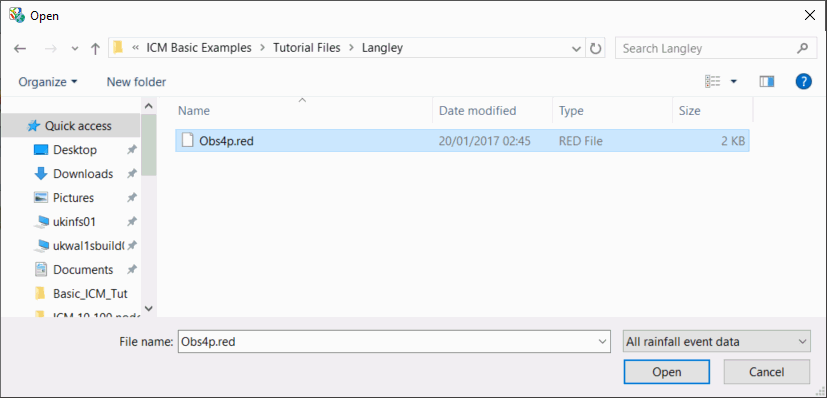
- Click Open. The rainfall event is added to the 'Rainfall Group'.
- Right-click the 'Rainfall Group' in the
Explorer window and select Import
InfoWorks Rainfall Event
- You can inspect the new rainfall event by opening it:
- Either right-click the event name in the Explorer window and select Open from the pop-up menu, or drag the event onto the main window.
- Use the scroll bar to view data from later in the event.
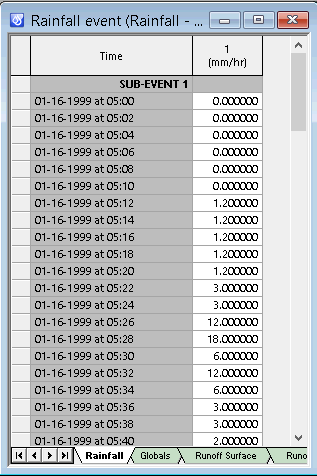
- When you have finished viewing the data, close the Rainfall Event window by clicking the
 button in the top right-hand corner of the window.
button in the top right-hand corner of the window.
The display shows observed rainfall intensity, recorded at two-minute intervals during a 2½ hour storm, with the rainfall rate being given in millimetres per hour for each timestep.
- You can also view the data as a graph:
- Right-click the event and click Open As on the pop-up menu. A Selection window is displayed.
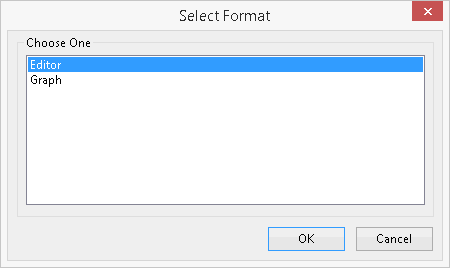
- Select 'Graph' from the list and click OK to display the imported rainfall event as a graph.
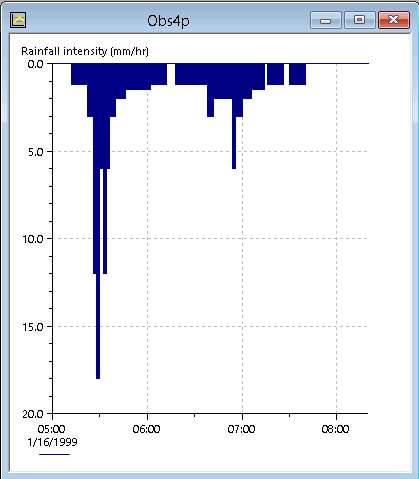
- Right-click the event and click Open As on the pop-up menu. A Selection window is displayed.
- Close the graph window by clicking the
 button in the top right-hand corner of the window.
button in the top right-hand corner of the window.
Waste Water Data
Trade waste water data is imported in a similar manner to rainfall data. To import and view the sample data:
- Import the waste water data:
- Right-click the 'Waste Water Group' and select Import
InfoWorks
 Waste water
Waste water from event file from the pop-up menu. The Windows Open dialog is displayed.
from event file from the pop-up menu. The Windows Open dialog is displayed.
- From the
Example Data Directory, select the 'Tutorial Files | Langley | Langley.wwg' file.
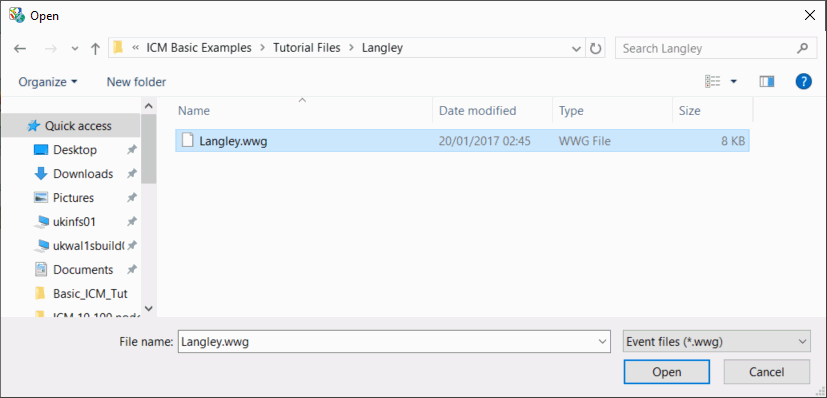
- Click Open. The waste water event is added to the project.
- Click the
 (Expand) button to the left of the 'Waste Water Group' in the
Explorer window to see the new item.
(Expand) button to the left of the 'Waste Water Group' in the
Explorer window to see the new item.
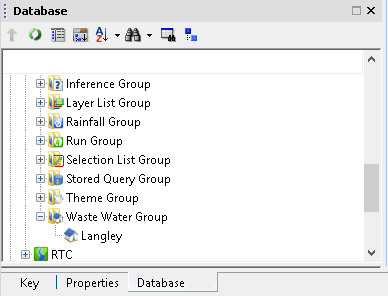
- Right-click the 'Waste Water Group' and select Import
InfoWorks
- You can inspect the new waste water event by opening it:
- Either right-click the event name in the
Explorer window and select Open from the pop-up menu, or drag the event onto the main window. The
Waste water Profile Editor window is displayed. There are two tabs on the window.
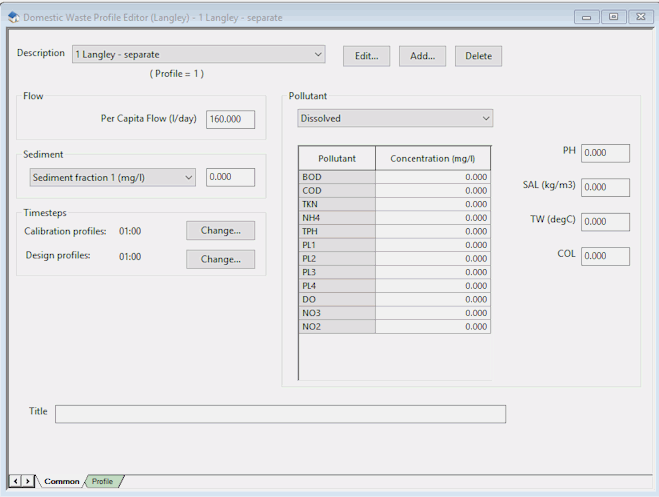
The Common tab shows the data on which the calculations are based, including the total per capita waste water flow in litres per day.
- Click the Profile tab (at the bottom of the window). This tab shows the way in which the waste water flow varies over the course of a day.
The factors on the left of the window show the relative flow for each hour of the day; this flow is represented by the graph on the right. The drop-down list in the Calibration/Design Profile pane allows you to choose between the different profiles that comprise the event.
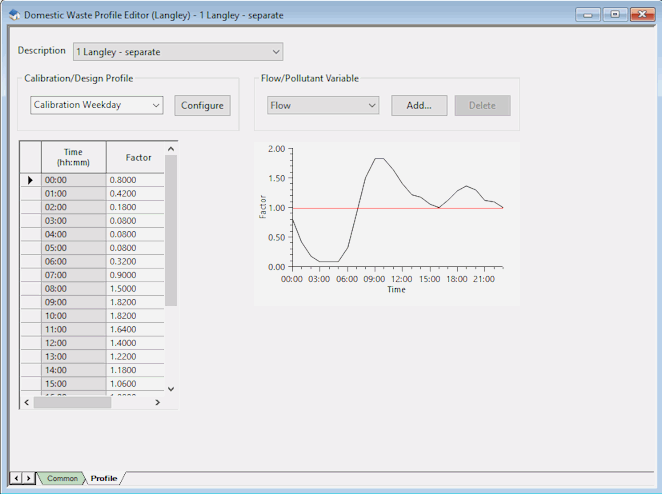
When you have finished viewing the data:
- Close the editor by clicking the
 button in the top right-hand corner of the window.
button in the top right-hand corner of the window.
- Either right-click the event name in the
Explorer window and select Open from the pop-up menu, or drag the event onto the main window. The
Waste water Profile Editor window is displayed. There are two tabs on the window.
You now have all the data you need to run a simulation.


